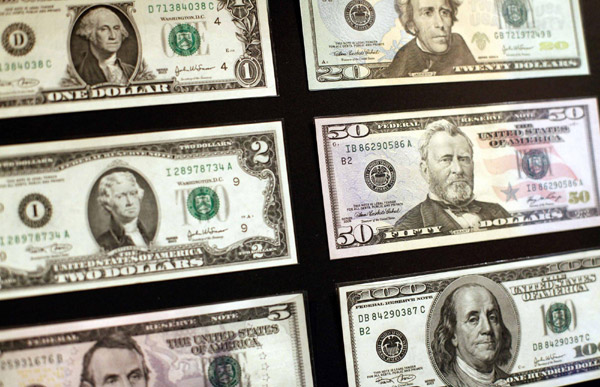Global Biz
Bernanke sees case for more Federal Reserve easing
(Agencies)
Updated: 2010-10-16 10:42
 |
Large Medium Small |
|
 United States dollar banknotes are seen at the Museum of American Finance in New York October 15, 2010. The US dollar hit its lowest in more than eight months against the euro on Friday, while the Australian dollar surged above parity versus the greenback after Federal Reserve Chairman Ben Bernanke reinforced expectations of further monetary policy easing. [Photo/Agencies] |
BOSTON - US Federal Reserve Chairman Ben Bernanke on Friday offered his most explicit signal yet that the US central bank was set to ease monetary policy further, but provided no details on how aggressively it might act.
Bernanke warned a prolonged period of high unemployment could choke off the US recovery and that the low level of inflation presented an uncomfortable risk of deflation, a dangerous downward slide in prices.
With overnight interest rates already close to zero, many economists expect the Fed to launch a fresh round of bond purchases, perhaps on the order of $500 billion, to push borrowing costs lower at its next policy meeting on Nov 2-3.
Prices for longer-dated US government debt fell after Bernanke's remarks as investors bet the Fed would be successful in generating more inflation. Stocks were mixed while the dollar briefly hit an eight-month low against the euro.
Bernanke said the central bank could bolster its economy and inflation-lifting efforts by indicating a willingness to hold interest rates low for longer than currently expected.
The Fed pushed overnight rates to zero in December 2008 and then bought $1.7 trillion in US government and mortgage-linked bonds to offer more support for the economy.
Officials have said further asset buying, or quantitative easing, would be the course they would most likely pursue to spur a stronger recovery.
Bernanke indicated Fed policymakers were still weighing how aggressive they should be, leaving markets to guess as to the details of any operation.
"The only question left is the size and scope of QE," said Boris Schlossberg of GFT Forex in New York.



